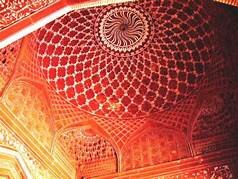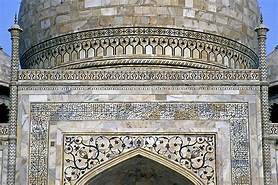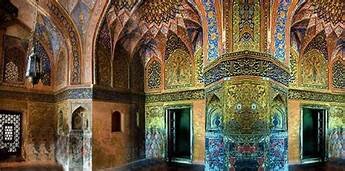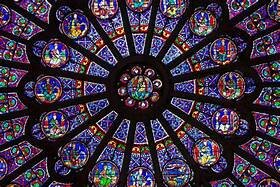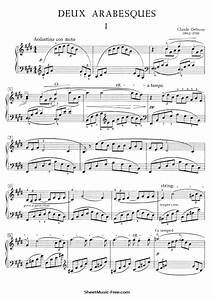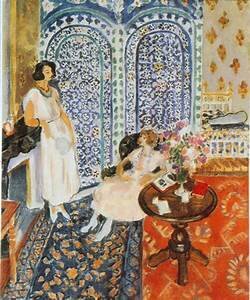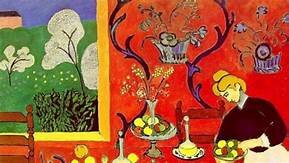Discovering the Meaning of the
Noun and Adjective
ARABESQUE
Our lives are filled with patterns that we become accustomed to. Some of these patterns are quite beautiful, like having an order to your day that is healthy with balanced sleep, exercise, time with friends and simply having a cup of coffee. Some of these patterns are quite unhealthy, like abusing your body with lack of sleep, eating garbage that leads to obesity and hanging out with the wrong crowd. Patterns that contain harmony, simplicity, and rhythm go beyond a daily routine, they are found in literature, math, science and especially art.
An example of arabesque
It is the artful patterns that we are going to concern ourselves with, though all the other dynamics are every bit important as well. The definition of arabesque initially gives reference to an ornament or style that employs flower, foliage, or fruit and sometimes animal and figural outlines to produce an intricate pattern of interlaced lines. When you look at a dollar bill you see that arabesque designs of plants an berries couch the imagery and numbers of the bill. Arabesque, in a sense, becomes visual comfort for the eyes. It embraces anything important to us and makes a statement unto itself that this object that I embrace is sacred or important. Such is the usage of arabesque design in Islamic art found in Mosques around the world. The intricate patterns weave the eye into a form of meditation and beauty above any form or narrative such as would be found in Catholic churches throughout Italy. However, the rhythm and patterns of angelic beings, Jesus and His disciples and the Saints all become their own meta-dynamic of arabesque as you gaze at the asymmetrical beauty of the ceilings of these sacred spaces as well.
Arabesque patterns of design are found throughout the Islamic architecture of the Taj Mahal, one of the most iconic monuments in the world.
The stain glass windows of Notre Dame Cathedral reveal an arabesque formation of beauty.
An arabesque sunrise
Arabesque is also found in nature if we take the time to see it. Intricate patterns move across the sky in clouds and sunrises and sunsets. The arabesque of a field of wild flowers reveals the same simplistic beauty. Sometimes, if you look for it, you can even observe interesting patterns of color and design in the grocery store aisle. Arabesque is also used in ballet, and refers to a posture in which the body is bent forward from the hip on one leg with one arm extended forward and the other arm and leg backward. Again, it is a pattern of beauty that is repeated again and again even in the most disciplined form of dance, ballet.
An arabesque design in a grocery store aisle holds a balanced form of beauty without our seeing it.
The arabesque stance in ballet is a fundamental pattern of balance and form.
Arabesque is found throughout music, especially the writing of music that holds its own arabesque visual language of notes as shown here.
What does arabesque sound like if beautiful patterns were put together so that we hear what we see? The famous composer Debusy did just that in his composition Arabesque as you can hear below.
Henri Matisse in his studio.
The famous 20th century French artist named Matisse used arabesque motifs in most of his paintings, especially the last years of his life.
Your assignment: Observe the arabesque renderings of the trees created below. Create your own tree series depicting them in an arabesque form. Think of the Spanish moss oak trees in Savannah, or the Georgia pines. Use any medium to recreate one or more renderings.


